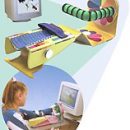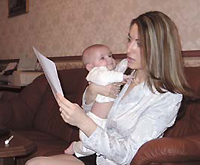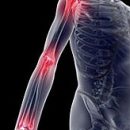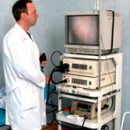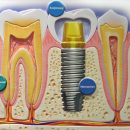How does Parkinson's disease manifest? How to diagnose Parkinson's disease? How to treat Parkinson's disease? Answers to these questions you will find in the article.
Content
The disease of the central nervous system, characterized by a slowdest of movements, trembling alone and disruption of reflexes.
The basis of Parkinson's disease is the defeat of the nerve cells of the head
Brain.
The average age of the disease - 57 years. The disease is less likely in smokers,
What is associated with the ability of tobacco smoke to inhibit the enzyme monoaminoxidase.
5-24% of patients - burdened family history (in the family there were cases of this
Diseases). Frequency of occurrence of 1% of the population over 65; 0.4% of the population over 40 years.
Most of the cases are fixed in people born from nearby marriages.
The characteristic manifestations of the disease are developing after the defeat of 80%
and more neurons.
How does Parkinson's disease manifest
- Trembling at rest in 50-80% of patients. Trembling in Parkinson's disease - rhythmic trembling II, III and the oppusable to the finger of the brush; in
Typical cases resembles riding a bread ball with fingers (by type «Catania
Pilyul», «Account Coin»); At the beginning of the disease, one-sided; Maximum B
peace, decreases or disappears when driving; during sleep is absent; Enharged
with emotional tension and fatigue; more often occurs on hand brushes, less often
on foot; Joy of jaws, language, eyelids are also observed.
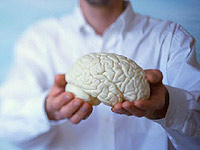 Progressive slowdown in motion, limiting volume and speed of movements,
Progressive slowdown in motion, limiting volume and speed of movements,
Difficulties in the initiation of the motor act. Violations of movements in Parkinson's disease
lead to the appearance of a masculine person with an open mouth, a sloped posture,
A screaming seed gait, lack of friendly movements of hands when walking.
- Violation of positions of reflexes leads to a missing (irresistible acceleration
Movement of the patient forward when walking or after a light shock) and retropulsia
(involuntary acceleration of the movement back after shock in this direction).
- Muscular tone is changed by the type of lead pipe.
- Speech slowed down, inexpressive, low-touch, quiet, staming. Missing
intonation (monotonous speech).
- Summary disorders: a decrease in the number of blinking movements, convulsive
Flashing or cutting of circular eye and eyelid muscles, seizures of the gaze (involuntary
Rotate the eyes up with long (up to a few minutes) holding them
in this position); Symptom of doll-eye - when the head is tilted forward eye
Apples are moving up, when writing off the head eyeballs are lowered.
- Seborrhea - Strengthening functions of sebaceous glands leading to redundant secretion
Skin Sala.
- Vegetative disorders: constipation, reduction in blood pressure, urine incontinence and feces,
Sexual dysfunction.
- The dementia develops in 50% of patients, more often at the beginning of the disease with bilateral
lesion.
How to diagnose Parkinson's disease
- Computer or magnetic resonance tomography
- Positron emission tomography.
How to treat Parkinson's disease
- Therapy is carried out throughout the patient's life.
- A sharp deterioration of the state indicates non-compliance with the regime, depression
or accompanying disease.
- It is important to preserve the maximum level of motor activity as long as possible.
- As the motionless violations progress, the development is necessary
Regular exercise programs.
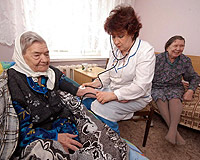 Levodopa + carbide via i tablet (25/250 mg) I-2 R / day after meals (with good
Levodopa + carbide via i tablet (25/250 mg) I-2 R / day after meals (with good
tolerance dose gradually increased by 1 tablet every 4-7 days before
Achievements persistent, but not more than 8 tablets / day) or levodopa + carbidop. Side
Effects: nausea, vomiting, psychosis, dyskinesia mouth, face, limbs, dystonia.
After 2-5 years of treatment in 50% of patients due to the reception of drugs containing
Legodopa, an inclusion phenomenon occurs: the low-basement is quickly replaced
uncontrollable hyperactivity (grimacing). To weaken this side
Effects recommended the transition to frequent receptions (after 1-2 hours) low doses of drugs
Levodopa, additional appointment of dopamine or deregysty agonists.Pyridoxin
Persons receiving drugs levodopa, contraindicated.
- Bromocriptine at 5-60 mg / day mainly in combination with small doses of drugs
Levodopa in late (with a decrease in the effectiveness or development of side effects
Levodopa) and early stages of the disease. Side Effects: Nausea, Mental
Disorders, reduction in blood pressure, headache. The tolerability of the drug worsens
alcohol.
- M-cholinoblocators - in the early stages and as an addition to levodopa preparations
at later stages; most effective for removing trembling. Treatment
start with small doses, gradually raising them. Biperiden 1-2 mg 3 p / day. Trihexiphenidyl 1-5 mg 3 p / day. Diphenylthropine at 10-12.5 mg 1-2 p / day.
Side reactions: dry mouth, reducing urination, constipation, visual impairment,
confusion of consciousness, violation of thermoregulation. Contraindicated with closedugal
glaucoma, urination delay, atrial fibrillation. Should be observed
Caution in arterial hypertension expressed atherosclerosis, diseases
Hearts, liver, kidneys.
- SELEGILIN of 5-10 mg / day, in combination with levodopa + benserazide or levodopa + carbidop;
Sometimes the side effects of Levodopa will potential.
- Diphenhydramine at 25-100 mg / day, with tremor.
- Amitriptyline 25-50 mg before bed) in combination with levodopa preparations - when depressed, anxiety, insomnia.
- Propranolol at 10-40 mg 2-4 p / day is sometimes effective when driving jitter
during physical activity.
- Operational treatment: with rough one-sided jitter and the absence of effect
from medication therapy.
- Method of treating Parkinsonism using cell transplantation secreting
Dopamine (embryonic or generated genetic engineering) in the region
basal ganglia so far remains only experimental.


